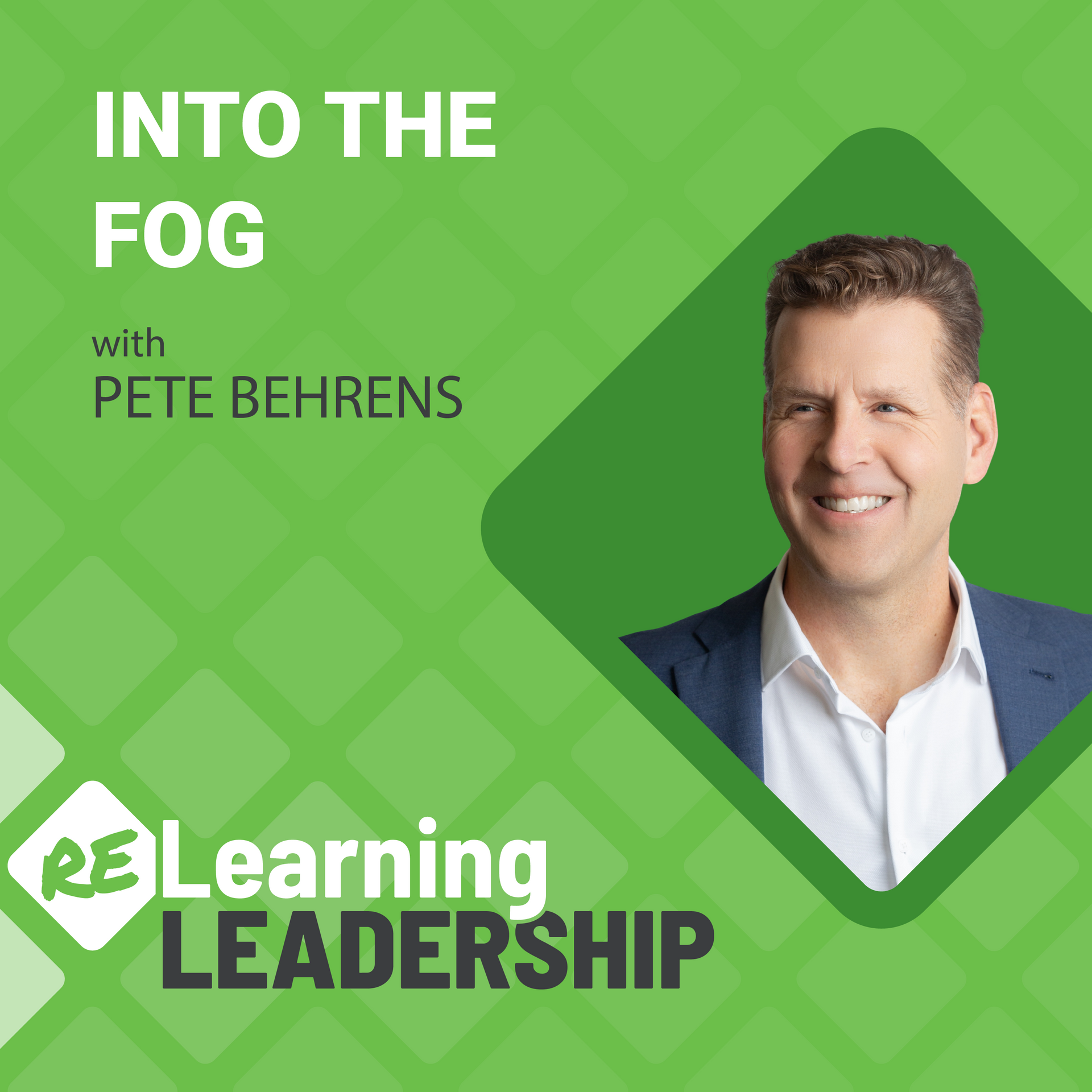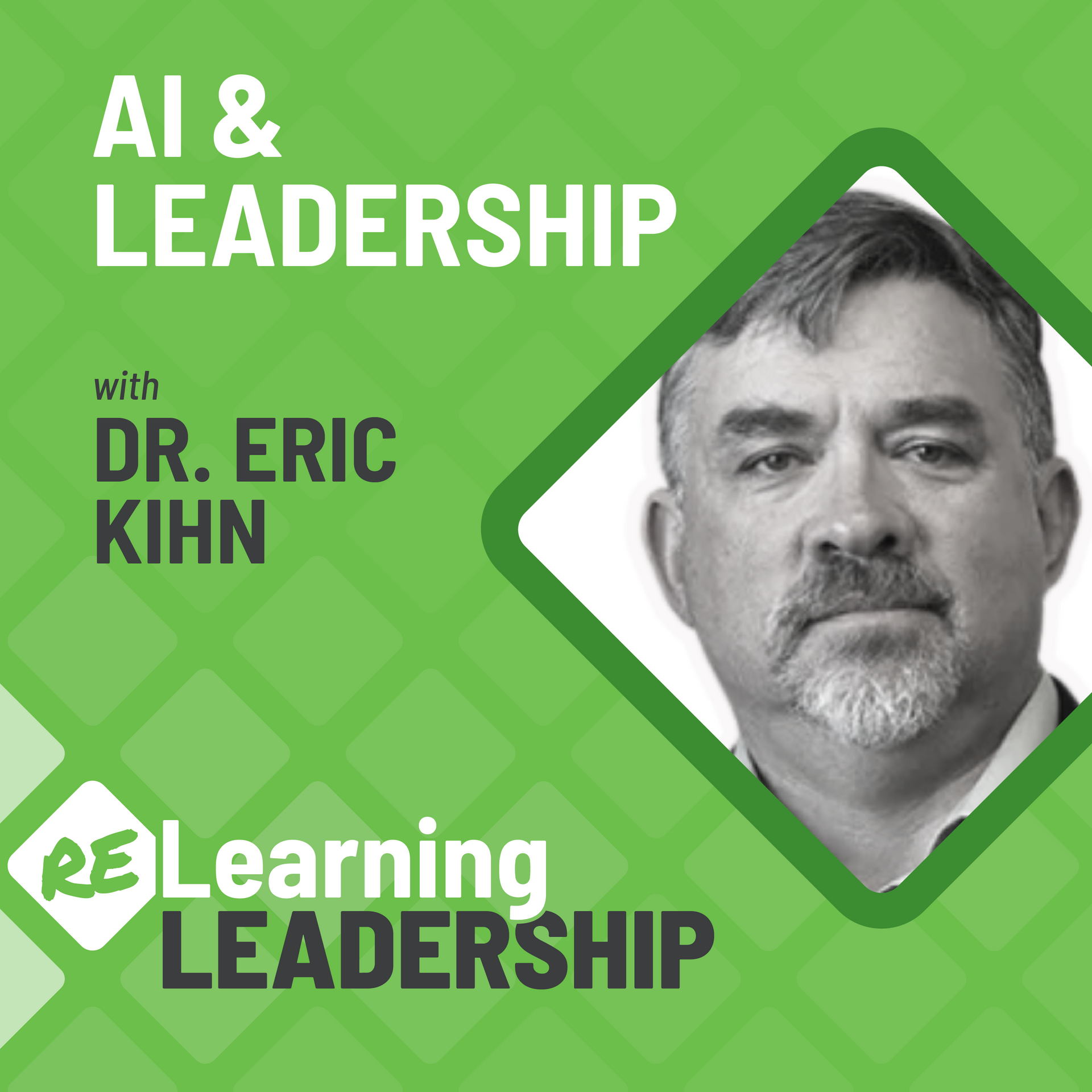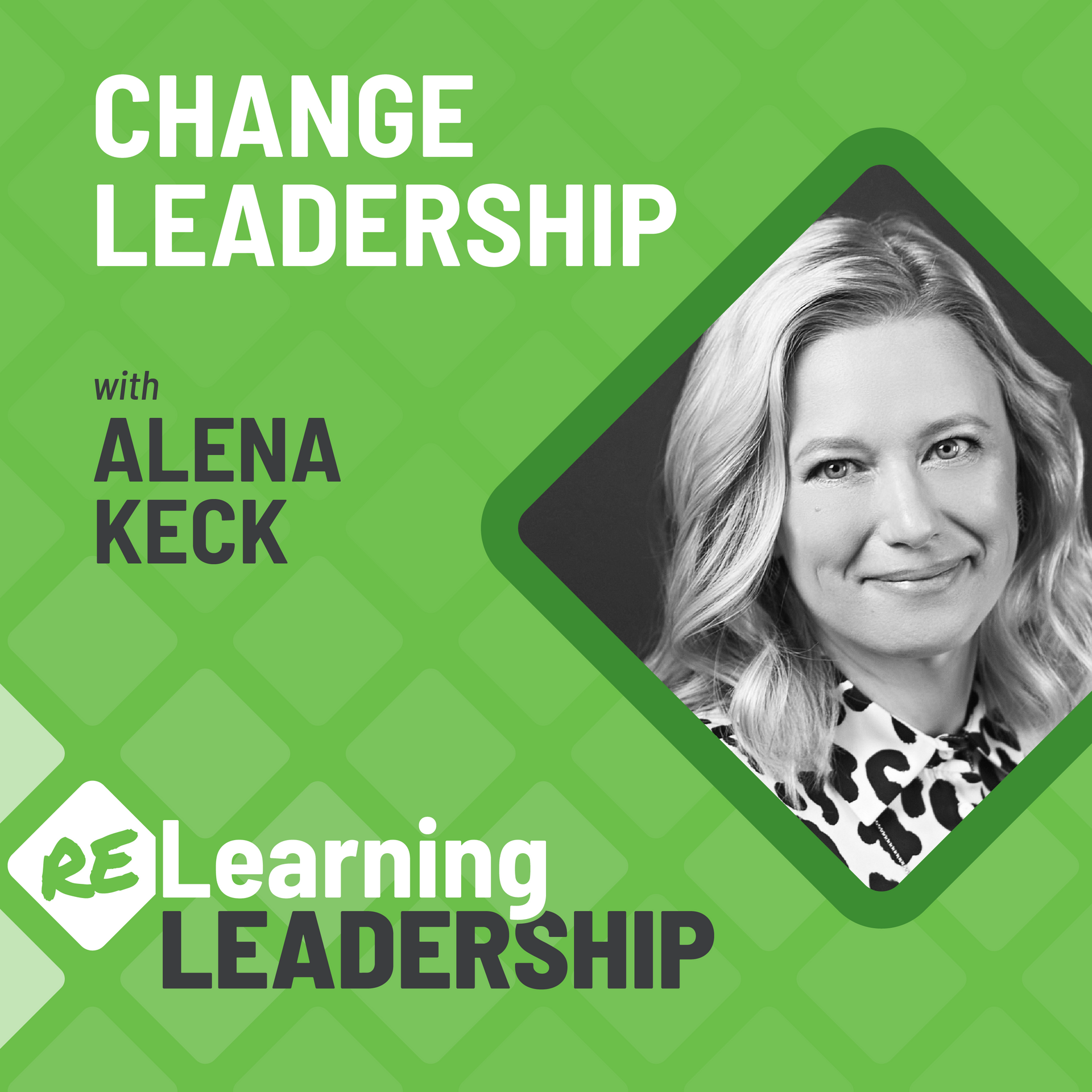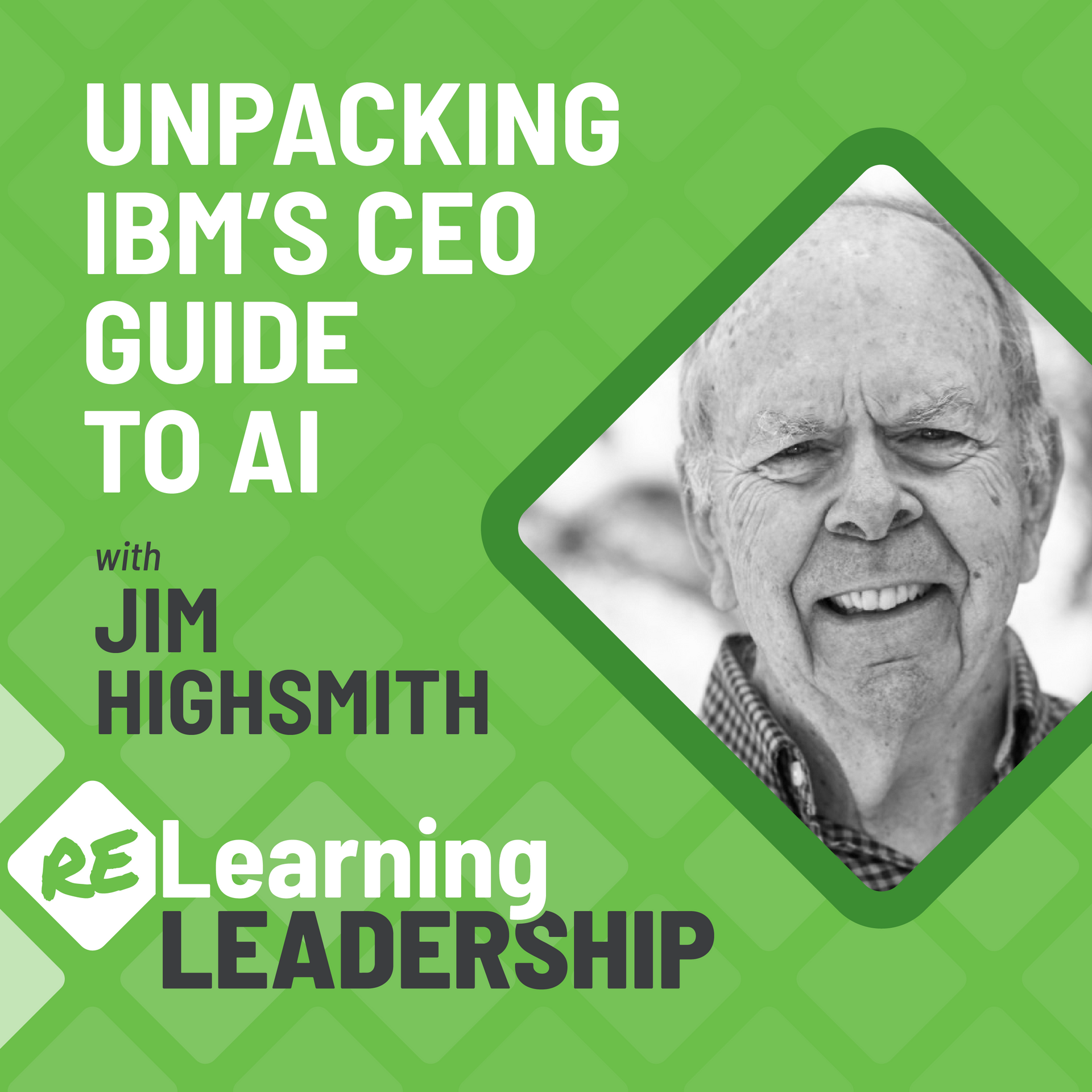30: How to Make Every Conversation Better Part II: A Catalyst Framework
Is there a silver bullet to make every conversation better?
Yes, there is!
In the second of a 3-part series, Pete shares some dance moves (we wish he would have
actually danced for us 😁) to avoid / delay threats and prioritize / give out rewards in your next conversation. This framework is a template that can work for virtually every pivotal conversation you have at work and home.
Relearning from this episode…
Don’t try to fix problems. It’s our human nature to try to fix things we see as wrong. And that includes others as well. The problem is that we cannot fix other people, only they can fix them. What we can do is help them catalyze thinking and next steps on their journey.
Dance! Often as leaders we are taught to “coach” others. However, what this ends up doing is putting us “over” others, like we are better than they are. Instead, think about being a friend, walk and talk with them. Reflect on what they are saying, empathize and be there to help think through their challenges and next steps.
Episode Transcript
Pete Behrens:
How can we make every conversation a better conversation?
Welcome to another episode of Relearning Leadership, where we explore a specific leadership challenge and break it down to help improve your leadership, your organization, and just possibly your personal life.
I’m Pete Behrens, and today, in Part II of this series, I want to share a catalyst framework that can help make every conversation a better conversation. Intrigued? Let’s dive in!
I want to start with a failure story, again with my partner Jana. Yes, my life—my learning journey—is filled with failure stories. And I guess, you know, those scars can make us better sometimes.
This particular story happened as she was sharing a problem with me, something she was dealing with, a friend. And she was struggling and frustrated, and I was trying to be a good partner.
I was trying to be there for her, help her work through this situation. But then, in the middle of it, she erupted. I say erupted—that was my impression. She said, “Stop fixing my problems!” I’m like, “Woah! Okay, what just happened here?” And then I thought, “Wait a second. I’m an engineer, you know? And it’s kind of what I’m good at. And didn’t you just come to me with a problem? What was the purpose of that?” Of course, she said, “Just listen.” And I’m thinking, “Okay, how is that going to help this situation?”
Yes, I have come a long way since that time in my life, but the engineer is still inside of me, the one who wants to fix things. And I need to be reminded often: it is NOT our job to fix other people. Now, let me repeat that. It is NOT our job to fix other people.
Okay. So, if that’s the case, what is our job? Our job is to actually catalyze other people. Spark inspiration, spark insight, spark ideas.
And that’s what I want to talk about with you today. The goal we want to share with you today is what we call a Catalyst Conversation, and it helps others take their own journey.
So let’s start with the goals of a Catalyst Conversation.
Goal number one is about avoiding and delaying threat and increasing and prioritizing giving out these rewards. Now, if you missed Part I of this series, I encourage you to go back because we covered that in quite a bit of detail. So before you finish this one, go back there and then come back to this, Part II.
The second goal I want you to keep in mind is what we just highlighted. Do not attempt to solve the problem. Instead, your job is to create inspiration and to catalyze forward action.
Okay. So, this Catalyst Conversation framework has five steps, and I’m going to take you through them. But recognize Step One and Step Five are fixed, right? We start and we end. But in the middle, we’ve got to learn to dance. So stay with me. Let’s have a little dancing right now.
Step 1: Align Objectives
Now, let’s go back to Pete’s story, my story. Was I aligned with Jana in that story? No, I wasn’t, right? My perspective was—she has a problem. She needs some help fixing it. But her perspective was, “Hey, I have a problem, and I just need to blow off some steam here and talk about this.” And had I maybe just asked the question, like, “Hey do you maybe want to work through this, or are you just trying to blow off some steam?” You know, maybe, just maybe, I would have had a chance to align with her.
But recognize alignment is not a one-way street. Right? Sometimes, like in my story, somebody needs to talk. But sometimes, as a leader, you need to talk. “Hey, I have something I need to talk with you about.” And yet other times, like, let’s say at an employee check-in, you might say, “Hey, here’s a couple of things I need to talk to you about. What’s on your mind?” Right? It’s both directions. So alignment is a two-way street.
And finally, on Align Objectives, don’t assume that alignment is fixed. As you dance in this conversation, you will quickly identify new information, which will likely cause: “Oh my gosh! We’re talking about something different. We might need to realign.” So don’t be afraid to come back to this step as you enter into the conversation and new information arises.
Step 5: Empower Action
This is the nut, right? This is the result you’re looking for. This is the place where they take ownership, empowerment. Remember we talked about SCARF? SCARF talked about autonomy. This is autonomy.
Now, this is where they come up with where they need to go next, right? What they need to do. But, remember, they don’t have to do this alone. And again, you’re not solving the problem. They don’t need the whole solution. All you’re looking for here is a next step, forward progress. So what can you do? Offer support, encouragement, idealization, right? You can be there with them and spar with some ideas and help them through this empowerment process, right? They’re not alone.
So we’ve got number one: Align Objectives. Number Five: Empower Action, right? That’s our endpoint. Now, in the middle, what we’re going to find is a seesaw. Remember that playground structure that you and your brother played on, and your brother jumped off so you would hit your butt as hard as possible on the ground? Yeah, that happened to me too. Well, a seesaw—what is that? That is something that goes up and down.
Our seesaw, in a Catalyst Conversation, is about power. Them and you, right? And just as a seesaw goes up and down—and it’s a lot more fun when you’re both going up and down, the Catalyst Conversation seesaw is a lot more fun when we go back and forth. So let’s dance.
Step 2. Explore Perspectives
This is where you get to ask questions. This is where your curiosity shines. Show an interest in them, right? We all know, number one, open questions are better than closed questions. But the biggest mistake, actually, that I see here is asking questions about the issue. We call it the “box”. Avoid the “box”, right? When we focus on the box, what do we do? What happens? We start to be that expert. Or, you know, what happened with me and Jana is—I was trying to be an expert, and all I did was end up frustrating her, right?
Instead, you want to focus your attention on them. How do they see the box? How do they feel about the box? What other boxes do they see lying in front of them? Your job is to get into their shoes. See it from their eyes, what’s going on, and how they’re relating to this issue.
Biggest mistake number two is actually asking too many questions! That’s what I said, yes! You can ask too many questions. People think, “If one question is good, well, then two is better.” NO! Once I get to about three questions, we’ve just turned this conversation into an interview, or possibly an interrogation. And indeed, people can get threatened by too many questions. Instead, dance! Ride that seesaw up and down.
Step 3. Clarify Understanding
This is the middle of the see saw.
The Big Mistake #1 here: “Uh-huh. Uh-huh. Uh-huh”. Nodding your head and grunting does not clarify understanding, right? At best, it shows interest, which is great, but it doesn’t clarify anything.
The other one here that is not very useful is, “Oh, I heard you say—. I heard you say—.” I had a coaching client come to me and say, “Pete, my spouse caught me!” “Like, okay, what happened?” And they were saying, “Well, I kept saying, ‘I heard you say—. I heard you say—.’” And the spouse was like, “What are you doing to me? You know, this is different!”
So while, again, reflecting what you hear is powerful, twist that a bit. Summarize. Interpret. Empathize with them. Clarifying understanding is not repeating what you hear; it’s processing what you hear. It’s connecting to the logic and also the feeling and emotion, what’s going on in the situation.
Clarifying understanding is a way to build connection.
And finally: Step 4. Sharing Insight, Wisdom, and Perspective
I run into a lot of people who say that sharing is not appropriate, especially for more coaching-oriented conversations. It just doesn’t belong. But the science says otherwise. Science says our brains process information differently when we talk and when we listen. And when we’re trying to generate ideas and have ah-hahs and insights, they say both are actually critical to that process. And so, it’s a little bit like riding that seesaw. Do you want that seesaw where we’re both on it (that’s a lot more fun!), or where somebody is standing on the sideline watching somebody on the seesaw try to do it by themselves.
Coaching is not a one-way street. Coaching—it’s got at least three parts to it, into that system. We’ve got the coachee, we’ve got the coach, and we’ve got that relationship, the seesaw. So when you think about it, the more you’re on that seesaw, the more you’re riding with them, the more we actually empower and co-create and ideate in a much more effective way. None of us have all of our stuff put together, and the more you’re a friend, the more I think you can start to relate and connect. You’re not better than. You’re not over them. You’re with them; you’re side-by-side. You’re walking with them.
And so, as you’re sharing—you know, an obvious one: don’t be a jerk. We can share humbly and respectfully.
Now, the biggest mistake I see is—I call it the have-you-tried symptom. “Have you tried this? Have you tried this?” That not only is a closed question—you know, yes/no, it’s really a passive-aggressive question. It’s assuming, number one, you’ve tried it, and number two, it’s suggesting they try it. Replace “Have you tried?” with something more personal. You know, it’s like, “Hey, something that’s worked for me—” or “Something I tried in this situation” or “Something I’ve learned over time—”. And then open it up with a question like, you know, “What do you think about that?” or “What are your thoughts on that?” Don’t assume something you’ve done or a situation applies here, but it can also be useful to share personally, in those ways.
But more importantly than that—my recommendation on the share side is to share something you’re seeing. Okay, so if I go back to the coaching relationships I have found most effective, it’s the coaches that push back on me, challenge me. “Pete, what you’re saying appears hypocritical.” “Pete, you’re saying something, but your body language is showing me something different.” Right?
When you actually share like a mirror, when you share what you’re hearing but you put some interpretation into it about what you see as a coach or as a leader, that’s really powerful .You know, when they’ve poked my blind spots and shown me things that maybe I’m not seeing, that’s incredible.
Okay. In Conclusion, we’ve got the five steps. Let’s do a quick review of what to avoid and how to focus.
- Number one: it’s not a linear path. It’s not 1, 2, 3, 4, 5. Okay, fix 1 and 5—right?—beginning and end. Dance in the middle. Have some fun. Play around. What’s needed? Where does this conversation need some focus right now.
- Number two: avoid the box. Avoid the issue. You do not need to ask questions about the issues. Focus on them. Get into their shoes. See their perspective. Your job is to really help them think through this problem.
- Number three: quit trying to solve or fix anything or anyone. This is not your job. You are not the expert here. You are not trying to fix this. Instead, inspire, ideate, catalyze forward action of somebody else.
- And finally, number four: avoid the feeling that you have to have answers. You do not necessarily need to be the subject-matter expert here, right? Your job is to show empathy. Your job is to explore possibilities with them.
So I encourage you to try out a Catalyst Conversation. In fact, write down the catalyst steps on a sticky note or an index card. Put it next to your computer. Put it in your notebook. Have it available as a reference in your next dialogue with an employee or a stakeholder or possibly even your kids.
Thank you for joining us today, and enjoy the journey!
Relearning Leadership is the official podcast of the Agile Leadership Journey, together we build better leaders. It’s hosted by me, Pete Behrens, with contributions from our global Guide community. It’s produced by Ryan Dugan. With music by Joy Zimmerman. If you enjoyed this episode, please subscribe, leave us a review, or share a comment. And visit our website,
agileleadershipjourney.com/podcast, for guest profiles, episode references, transcripts, and to explore more about your own leadership journey.
Explore:
Recent Episodes









